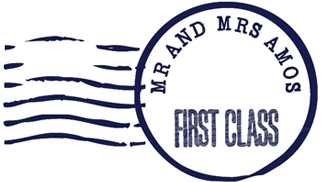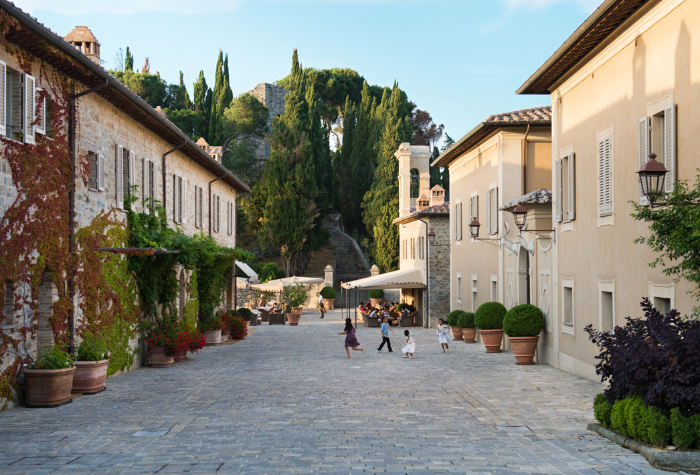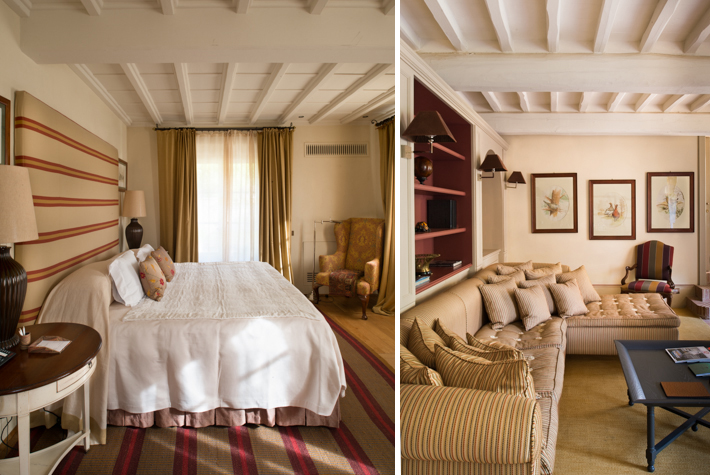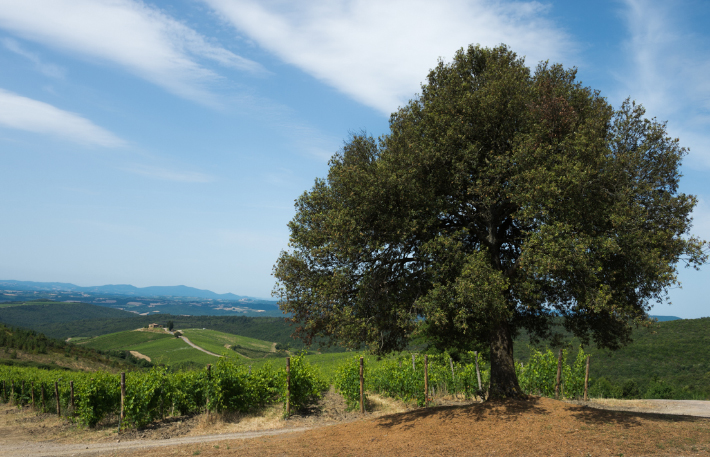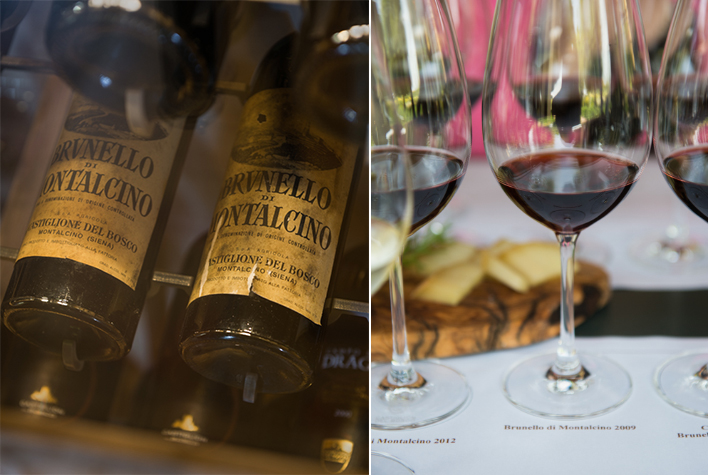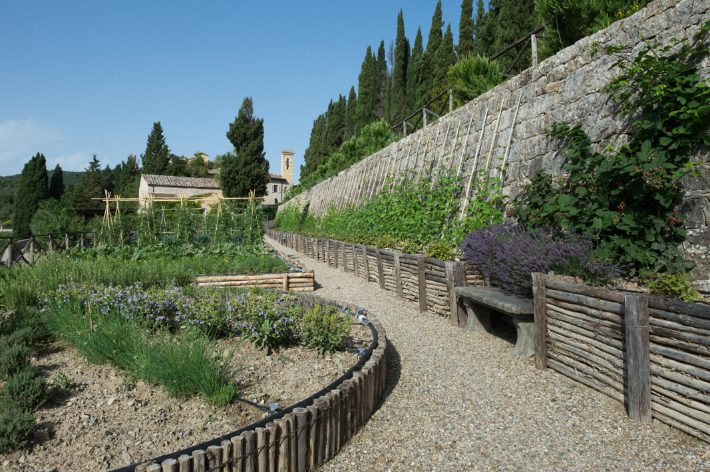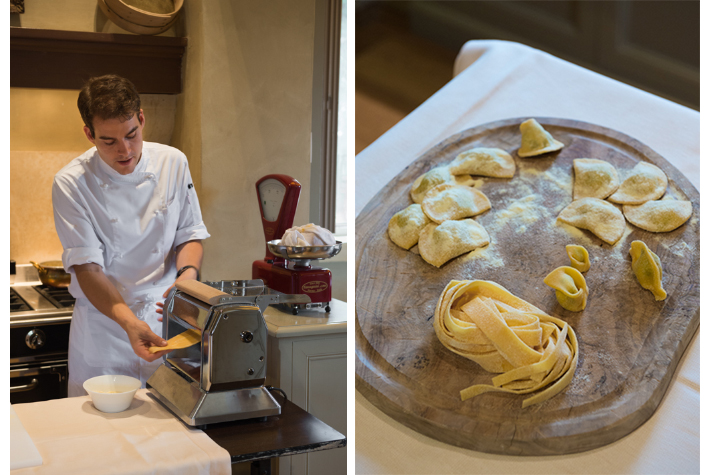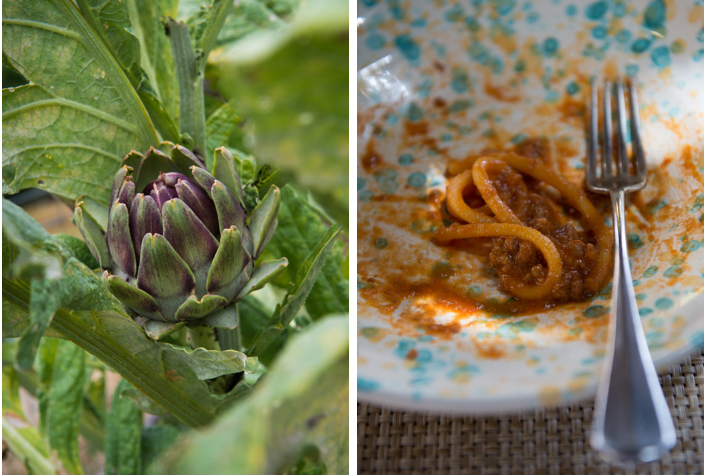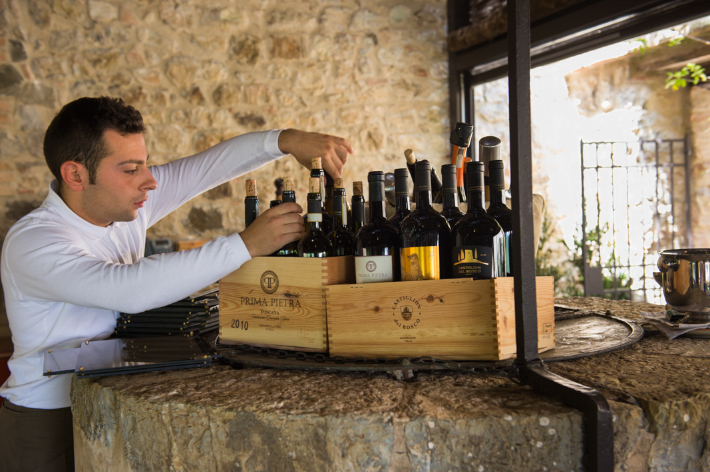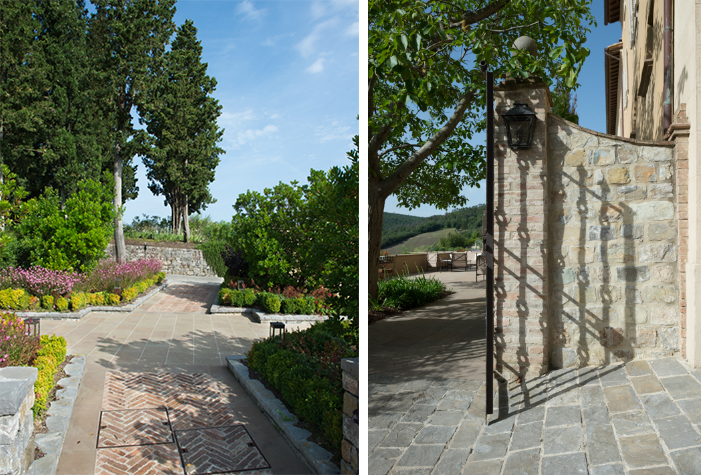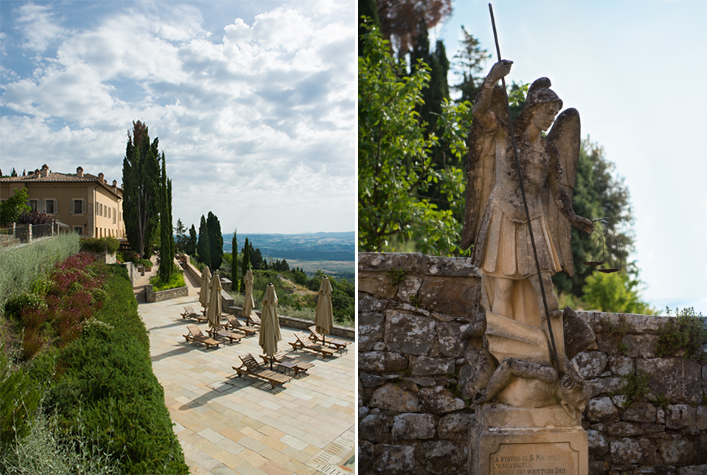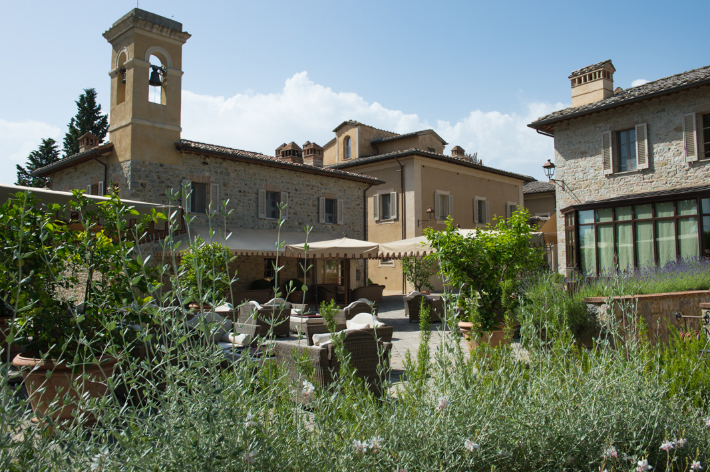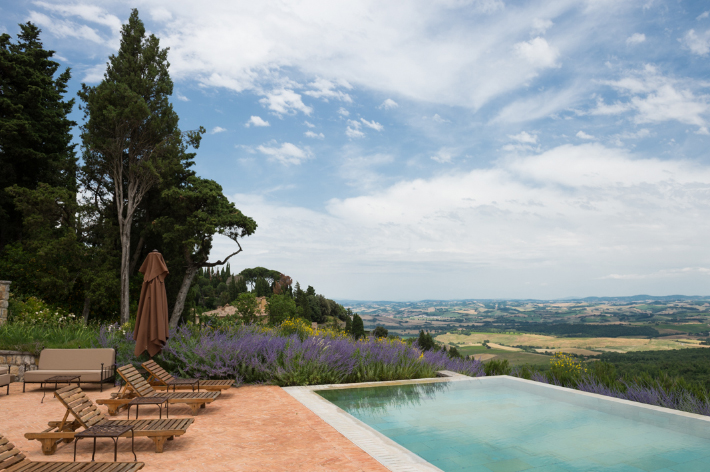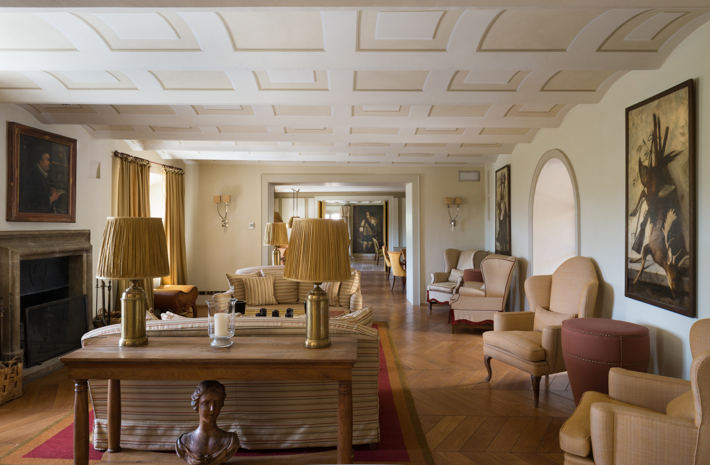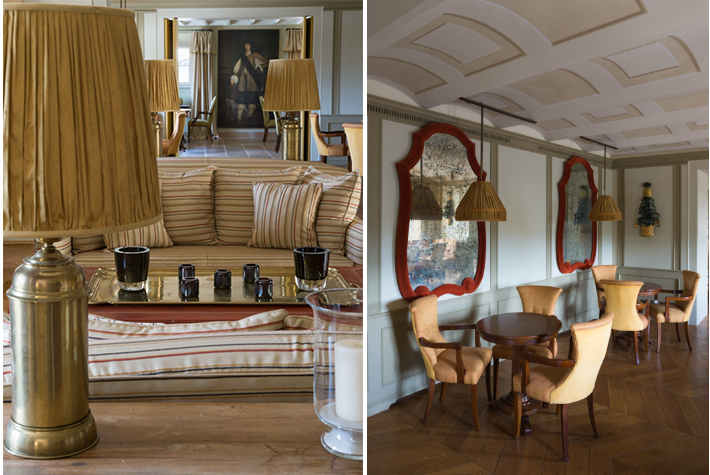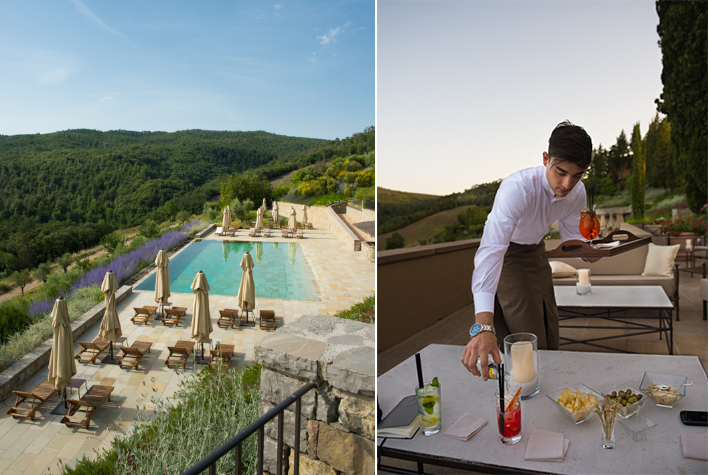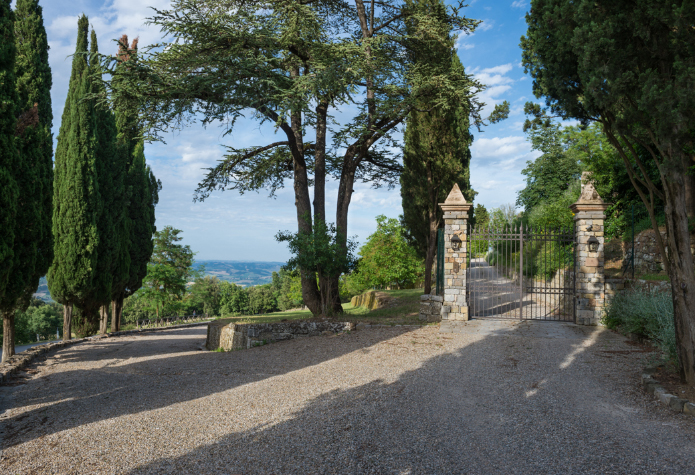Castle in the Woods
A medieval Tuscan village is turned into a picture perfect hotel.
Tuscany’s ‘white roads’
are a network of unpaved motorways, dusty in summer, which undulate through the vineyards and olive groves of the region’s famously gorgeous countryside.
Follow the old white road from Bibbiano, about two hours drive north of Rome, and you’ll soon find yourself in a magical place called ‘the castle in the woods.’ Rosewood Castiglion del Bosco was once a medieval Italian village that has been transformed into possibly the most perfect hotel in the world by Massimo Ferragamo, son of the famous shoemaker and chairman of the fashion brand’s US division.
Be prepared to eat and drink your way to gastronomic nirvana, especially if you’re a fan of the famed Tuscan red, Brunello di Montalcino, for the Castle in the Woods is connected to a 73 hectare wine estate, where guests can take part in the harvest or guided tastings, and a cookery school where you can learn some of the surprisingly simple secrets of Italian cooking.
There’s six kilometres of bumpy white road before you reach the gates of the old village but the slow going is rewarded with fabulous scenery. The hotel is set in 45,000 acres of forest, the king’s private hunting reserve since the middle ages, which is still teeming with wild boar, deer, foxes, hare and abundant bird life. From the highest point, there are views across the Val D’Orcia, Tuscany’s most beautiful valley, to the fortressed town of Montalcino. (Siena is only 35 kilometres away; Florence 104.) Beyond the forest there are vineyards, old farmhouses and rambling driveways edged with cypress trees.
The road is in fact the old via Francigena that took crusaders and merchants from Canterbury to Rome. The village, known simply as Il Borgo, was built in 1100, and was taken over in the 14th century by a prosperous merchant family, the Galleranis. (Cecilia Gallerrani is the subject of Leonardo’s Lady with Ermine.) It changed hands over the centuries, but became derelict in the 18th Century.
Guests can amble up to the village with its cobbled main street, stone houses and villas set in gardens planted with rosemary to keep out the wild boar.
Massimo Ferragamo, nostalgic for the Tuscany of his childhood, purchased the estate, with its 700 year-old chapel, ruined castle, forest, twenty farmhouses and prized vineyards in 2003 and it opened as a hotel, spa and golf course in 2010. (It’s Italy’s only private course, where the 19th hole is named for the Brunello vintage.) Rosewood hotel group, known for beautiful hotels with a sense of place, recently partnered with Ferragamo in managing the property.
Take away the beautifully manicured garden beds, the heated infinity pool edged with enormous drifts of lavender and the boutique selling chic clothing and jewellery, curated by Massimo’s wife Chiara, and you may in fact be walking down a medieval thoroughfare. After checking in at the hotel’s reception, guests can amble up to the village with its cobbled main street, stone houses and villas set in gardens planted with rosemary to keep out the wild boar (one villa, Chiusa, was the town’s police station in the 19th century.) There are 23 suits in the borgo and eleven villas, created from 17th and 18th Century farmhouses, spread throughout the vineyards.
The ruins of the castle tower overlook the village and the Church of san Michele Arcangelo, which has a beautiful fresco by Pietro Lorenzetti, discovered during the restoration, and where guests can take a private Holy Mass if they wish. Next door, the priest’s house has been turned into the hotel’s casual trattoria, Osteria La Canonica, while a grand villa next door becomes the dining room of the gastronomic restaurant, Campo del Drago, a Member’s Club and a stylishly-decorated lobby lounge that features some beautiful mirrors and hunting and farming artefacts. The terrace has fantastic views across the valley, with al fresco dining offered from breakfast buffet to full degustation menu in the evening.
Our one-bedroom walled villa sits below the castle, next door to the spa and just across the street from the trattoria and church. It’s set in large gardens, with a lawn, romantic wishing well, old wood-burning oven, a terrace with table and chairs under a market umbrella, day beds, and immaculate trimmed hedges. In the mornings, giant hares graze on the lawn.
Inside, the villa is the size of a small house, with a large living room and dining room furnished with plump sofas and beautiful fabrics, a good-sized kitchen and an enormous bathroom with twin vanities, separate shower, toilet and bidet, deep bath and Ferragamo amenities. The bedroom has a puffy king-sized bed, desk, TV and complimentary mini bar refreshed daily (and some delicious sweet treats by the bed each night.)
Blackberry plants climb up the ancient walls, wild strawberries ramble in the beds and there’s an orchard of apricot, fig, peach and cherry trees.
The attention to detail is astounding. The closets go for miles, with plentiful cedar hangers, shoetrees and a shoe shine kit of real brushes in a suede pouch, sewing cushion, wonderful hooded bathrobes, crunchy embroidered linen handtowels and black thongs for the pool. Everything is finely crafted and/or embellished with leather or suede – even the safe is covered in leather. A person could move right in, and some do stay for the summer.
Our first meal in the Osteria La Canonica, sitting on the terrace overlooking the valley, is superb comfort food – a starter of bresaola, followed by thick pici with beef ragu and mushrooms, and a crispy skin rare salmon with zucchini slivers and mashed potatoes, washed down with the Millecento 2008. If this is not enough, the kitchen brings out a whole white truffle wood-fired pizza for us to sample. We’ve eaten more than sufficient amounts of food but we throw caution to the wind – the pizza is unbelievably cloudy and melt-in-the-mouth. A priest lived in this building until the 1960s and an ancient laurel tree shades the interior of the lively restaurant.
Much of the hotel’s produce comes from the carefully tended kitchen garden, which can be visited via a gate near the church. The architect of the organic garden also built the Vatican’s vegetable garden. The ash from the wood oven fertilises the soil, which is flourishing in summer with rotated crops of all the Italian staples from zucchini (three types) and artichoke to the more exotic black cabbage. Blackberry plants climb up the ancient walls, wild strawberries ramble in the beds and there’s an orchard of apricot, fig, peach and cherry trees.
Private or group cookery lessons are available with one of the hotel’s young chefs at the La Cononica Cooking School, held in the beautiful upstairs kitchen and dining room of the former priest’s house, where the rope that rings the chapel’s bell hangs. (Up to six guests – euro 180 per person.) I’m keen to learn how to make pasta, so I don a monogrammed apron and get stuck into mixing the eggs and durum flour, learning how to get the right texture by folding the dough in three each time before it runs through the pasta machine. It needs to be thin enough so you can see your fingernails through it.
For me, the revelation is in the sauce. For the tomato sauce, the chef has me help chop white onions finely, then cut up three different kinds of tomatoes into small pieces and salt them (always before popping them in the oil.) This is all gently cooked off with bruised basil leaves, which turn green when cooked.
The ragu involves slowly cooking in oil a fine mix of diced celery, carrot and onion, then adding three kinds of mince, beef, veal and pork. The meat is broken up, a good slurp of red wine is added, it’s all cooked down and the tomato sauce is added, then cooked for a few minutes more. Where is the garlic? I ask. There is no garlic in Tuscan cooking when onions are used, is the answer. It’s either one or the other. I finish with a lesson in making biscotti, which are dipped in warm marsala sabayon. I get to keep the apron and recipes. The best thing? Sitting down to dine on it all.
The winery, planted all around with white roses and herbs in tubs, is immaculate, a handsome building where you can tour the wine vats and sit down to a guided tasting of several vintages.
In the gastronomic restaurant, Campo del Drago, named for the Brunello vintage from the finest vineyard, chef Enrico Figliuolo creates seasonal menus from local produce, with some tasty ring-ins, such as the lobster, which flavours a luscious pasta. Drinking some Campo del Drago seems mandatory, no? What stands out most now are the incredible desserts such as tiramisu served with coffee icecream and thick hot chocolate. And a chocolate trolley follows the cheese trolley, cementing my love of this place.
In the vineyards, the grapes are all picked by hand, as the weight of the tractor adversely affects the soil and roots of the vines. Overall, the area of Montalcino encompasses 24,000 hectares of vineyards, and the brown-red Brunello has been produced there from the 14th century, the Castiglion vintage from 100% Sangiovese grapes. It was once a rare and highly prized wine (these days the best vintages still are) but since the region was granted Denominazone of Origine Controllata status in the 1960s, the number of small producers has grown to over 200. Fifty-one of Castiglion del Bosco’s 73 hectares are devoted to Brunello. The cellar also produces a great drinkable rosso.
The winery, planted all around with white roses and herbs in tubs, is immaculate, a handsome building where you can tour the wine vats and sit down to a guided tasting of several vintages. There’s an invitation-only Wine Club if you have the wherewithal – with its own plush, rotund cellar where member’s vintages are held in specially designed refrigerated cabinets.
Aside from culinary adventures, there are an extraordinary amount of activities available at Castiglion del Bosco, including archery, night safaris to view the wildlife, astronomy, landscape painting, photography workshops, tennis and golf lessons, horseback riding, Italian classes, mountain hiking and fishing. Children are very welcome – there’s a kid’s club, Rose Buds, and we run into a gang of happy children playing tag in the street. Other guests during our stay include a Korean pop star, a Chinese department store billionaire and the actor Ben Stiller, who is hidden away in the vineyards, in one of the eleven restored farmhouse villas.
When it’s time to leave and attempt those white roads again, we find our car has been cleaned of dust and there’s a farewell gift of sticky fruit patés and two bottles of Aqua Panna inside.
It’s this thoughtfulness above all that makes the Castle in the Woods so enchanting.
THE DETAILS
Rosewood Castiglion del Bosco, 53024 Montalcino, Siena, Italy Tel +39 0577 1913001; info@castigliondelbosco.com
